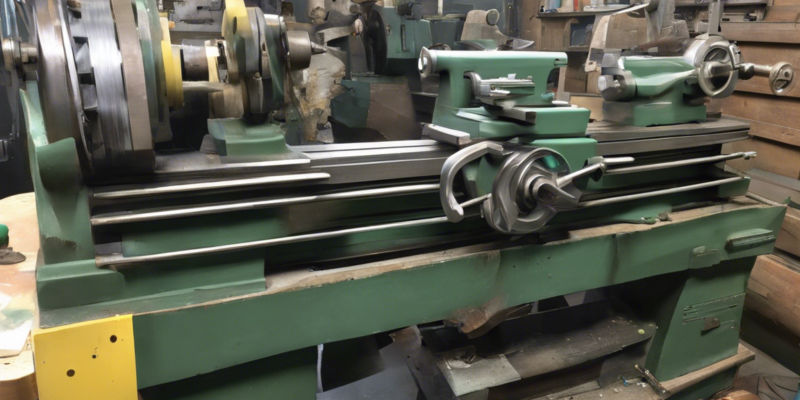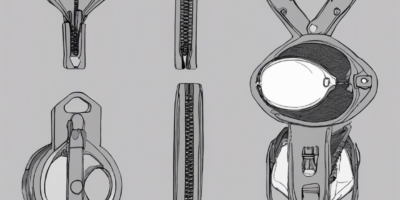Introduction
Industrial accidents can have devastating consequences, not only for the individuals involved but also for the companies and industries in which they occur. One such accident involving an industrial lathe serves as a stark reminder of the importance of safety protocols and procedures in the workplace. In this article, we will delve into the details of an industrial lathe accident, examining the potential causes, consequences, and preventive measures that can be taken to avoid such tragedies in the future.
The Industrial Lathe: A Versatile but Dangerous Machine
An industrial lathe is a versatile machine used in metalworking and woodworking processes to shape, cut, and drill materials with precision and accuracy. While these machines are essential for manufacturing processes, they can also pose significant risks to workers if proper safety measures are not followed. The rotating components of a lathe, such as the chuck and cutting tools, can cause severe injuries if they come into contact with an individual’s body.
The Accident: A Split-Second Mistake
In the case of the industrial lathe accident, it all came down to a split-second mistake. A seasoned machinist, who had been operating lathes for over a decade, was working on a particularly challenging piece when he made a slight miscalculation. As he attempted to adjust the cutting tool, his hand slipped, and he inadvertently brushed against the rotating chuck. In that moment, his life changed forever.
Consequences of the Accident
The consequences of the industrial lathe accident were profound and far-reaching. The machinist suffered severe lacerations and fractures in his hand and arm, requiring multiple surgeries and extensive rehabilitation. His ability to work was significantly impaired, leading to a loss of income and mounting medical bills. The company where the accident occurred also faced repercussions, including legal liabilities, reputational damage, and decreased employee morale.
Preventive Measures: Ensuring Workplace Safety
In the aftermath of the industrial lathe accident, several preventive measures were implemented to enhance workplace safety and prevent similar incidents in the future. These measures included:
- Mandatory Safety Training: All employees were required to undergo comprehensive safety training on the proper operation of industrial lathes and other machinery.
- Enhanced Supervision: Supervisors were tasked with closely monitoring workers during machining operations to ensure adherence to safety protocols.
- Safety Equipment: Personal protective equipment, such as gloves, goggles, and aprons, was made mandatory for all employees working with industrial lathes.
- Regular Maintenance: Routine maintenance checks were conducted on all machinery to identify and address any potential safety hazards promptly.
- Safety Protocols: Clear and concise safety protocols were established and prominently displayed in the workplace for easy reference.
Lessons Learned and Moving Forward
The industrial lathe accident served as a stark reminder of the importance of vigilance and compliance with safety protocols in the workplace. It highlighted the fact that even experienced professionals can make mistakes and that the consequences of those mistakes can be severe. By learning from the incident and implementing proactive safety measures, companies can create a safer work environment for their employees and protect against costly accidents and injuries.
Frequently Asked Questions (FAQs)
1. What are the common causes of industrial lathe accidents?
Industrial lathe accidents can be caused by factors such as improper training, lack of supervision, equipment malfunction, fatigue, and complacency.
2. How can companies improve workplace safety when using industrial lathes?
Companies can enhance workplace safety by providing comprehensive safety training, implementing strict safety protocols, ensuring regular equipment maintenance, and promoting a culture of safety awareness among employees.
3. What are some common injuries resulting from industrial lathe accidents?
Common injuries resulting from industrial lathe accidents include lacerations, fractures, amputations, crush injuries, and in severe cases, fatalities.
4. Is it necessary to wear personal protective equipment when operating an industrial lathe?
Yes, it is essential to wear personal protective equipment such as gloves, goggles, and aprons when operating an industrial lathe to minimize the risk of injuries.
5. How can employees contribute to maintaining a safe working environment around industrial lathes?
Employees can contribute to maintaining a safe working environment by following safety protocols, reporting any safety hazards or concerns, attending regular safety training sessions, and staying vigilant during machining operations.
In conclusion, the industrial lathe accident serves as a poignant reminder of the importance of prioritizing workplace safety and adhering to strict safety protocols in industrial settings. By learning from past incidents, implementing preventive measures, and fostering a culture of safety, companies can protect their employees from harm and prevent the devastating consequences of industrial accidents.














Comments